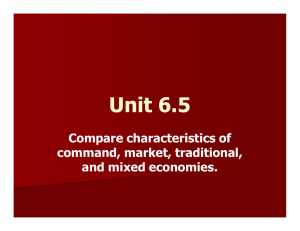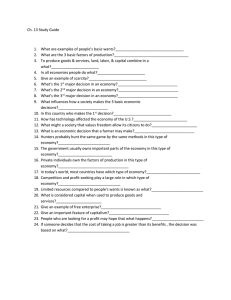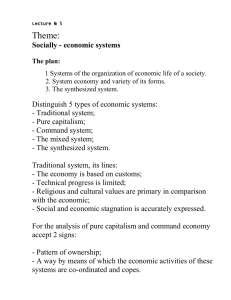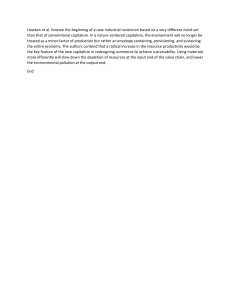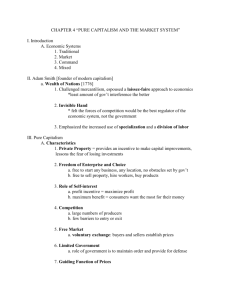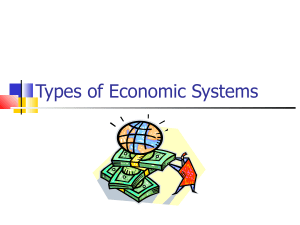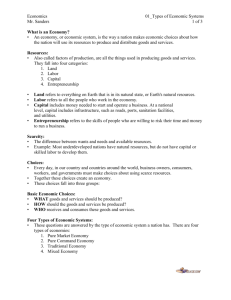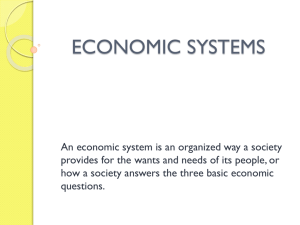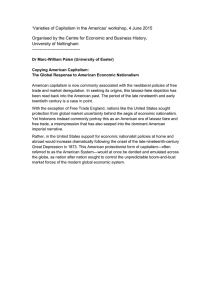Economic Systems - Effingham County Schools
advertisement
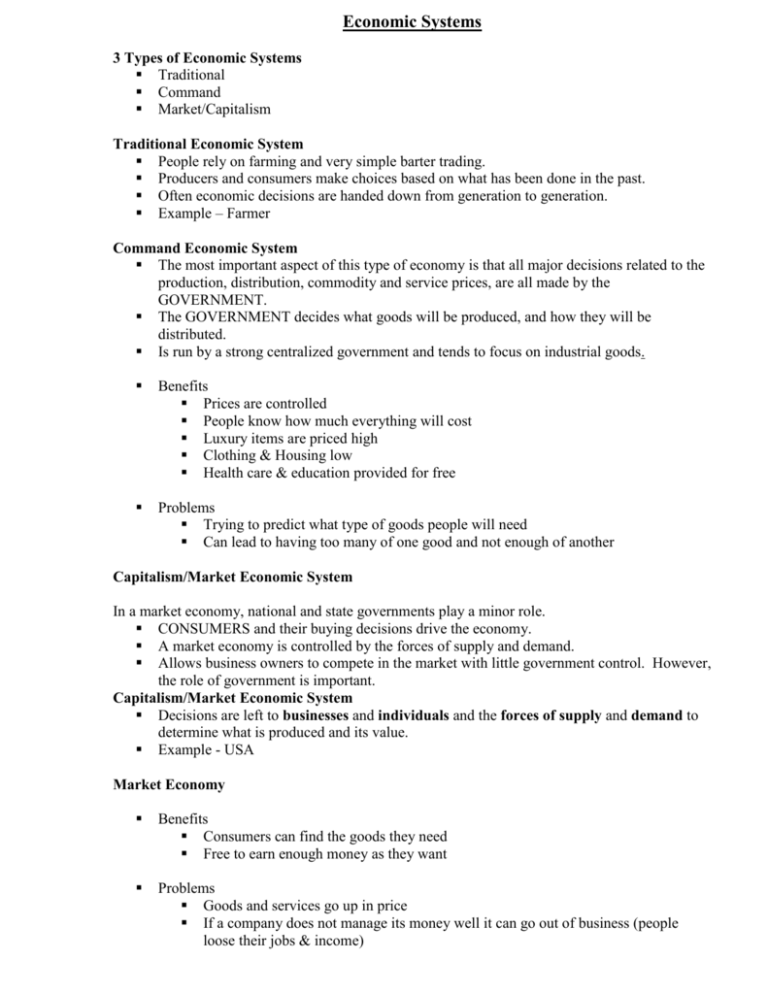
Economic Systems 3 Types of Economic Systems Traditional Command Market/Capitalism Traditional Economic System People rely on farming and very simple barter trading. Producers and consumers make choices based on what has been done in the past. Often economic decisions are handed down from generation to generation. Example – Farmer Command Economic System The most important aspect of this type of economy is that all major decisions related to the production, distribution, commodity and service prices, are all made by the GOVERNMENT. The GOVERNMENT decides what goods will be produced, and how they will be distributed. Is run by a strong centralized government and tends to focus on industrial goods. Benefits Prices are controlled People know how much everything will cost Luxury items are priced high Clothing & Housing low Health care & education provided for free Problems Trying to predict what type of goods people will need Can lead to having too many of one good and not enough of another Capitalism/Market Economic System In a market economy, national and state governments play a minor role. CONSUMERS and their buying decisions drive the economy. A market economy is controlled by the forces of supply and demand. Allows business owners to compete in the market with little government control. However, the role of government is important. Capitalism/Market Economic System Decisions are left to businesses and individuals and the forces of supply and demand to determine what is produced and its value. Example - USA Market Economy Benefits Consumers can find the goods they need Free to earn enough money as they want Problems Goods and services go up in price If a company does not manage its money well it can go out of business (people loose their jobs & income) There are no pure free market or pure command economies in the world. All economies are mixed. They fall some where along a continuum as shown above.
